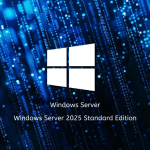The Biggest HR Challenges in 2025
Retaining Top Talent
Employee retention continues to be a significant concern for HR leaders. With increased job mobility and evolving employee expectations, companies must work harder to keep their best talent. High turnover rates not only disrupt operations but also lead to significant financial losses through the cost of hiring and training new employees, as well as the loss of institutional knowledge and productivity. Additionally, high turnover can negatively impact morale among remaining employees, creating a vicious cycle of attrition. Understanding why employees leave and addressing their concerns proactively is essential for retention, and organizations must invest in creating a positive and supportive work environment that fosters loyalty and commitment.
Attracting Qualified Candidates
The competition for top talent remains fierce. Potential employees research company cultures and reputations before applying for jobs, often relying on online employee reviews to form their opinions. A poor employer brand can deter high-quality candidates, making recruitment more difficult and potentially leading to the hiring of less qualified individuals. Organizations must proactively manage their employer brand and ensure that they are presenting a positive and accurate picture of the company culture and employee experience.
Improving Employer Branding
Employer branding plays a crucial role in recruitment and retention. A strong employer brand not only attracts new talent but also fosters a sense of pride among current employees. Organizations that fail to manage their reputation risk losing competitive advantage in the job market and may struggle to attract and retain top talent. Building a strong employer brand requires a multifaceted approach that includes consistent messaging, positive employee experiences, and proactive reputation management.
Enhancing Employee Engagement
Low engagement levels result in decreased productivity, lower job satisfaction, and increased turnover. Employees who feel unheard or undervalued are less likely to contribute effectively to the organization. HR leaders must find ways to listen to and act on employee concerns to create a more engaged workforce, which can lead to increased productivity, innovation, and overall organizational success.
Managing Workforce Sentiment & Feedback
Traditional annual employee surveys no longer provide real-time insights into workforce sentiment. In 2025, HR professionals need continuous feedback mechanisms to stay ahead of emerging workplace challenges and address employee concerns before they escalate. Real-time feedback allows organizations to be more agile and responsive to employee needs, which can improve morale, productivity, and retention.
How Employee Reviews Provide Solutions
Boosting Employee Retention Through Feedback
Employee reviews offer valuable insights into workplace challenges, allowing HR teams to implement necessary improvements. By analyzing recurring themes in feedback, organizations can proactively resolve issues, improve job satisfaction, and prevent unnecessary resignations. For example, if employee reviews consistently mention a lack of communication from management, the organization can take steps to improve communication channels and ensure that employees feel informed and heard. Regular feedback loops create an open communication culture that fosters trust and loyalty among employees, leading to increased retention and a more positive work environment.
Improving Employer Branding for Stronger Talent Acquisition
A well-managed employer brand, supported by authentic employee reviews, attracts top candidates. Companies that encourage and respond to employee feedback demonstrate transparency and commitment to workplace improvement. Positive reviews act as testimonials, showcasing the organization’s strengths and making it more appealing to potential hires. A strong employer brand can also help organizations differentiate themselves from competitors and attract candidates who align with the company’s values and culture.
Enhancing Workplace Culture and Engagement
Actively listening to employee feedback fosters a culture of transparency and continuous improvement. Organizations that analyze employee reviews can identify trends in job satisfaction, communication issues, and leadership effectiveness. Addressing these insights helps create a workplace where employees feel valued, leading to higher engagement and productivity. Additionally, a culture of open communication and feedback can lead to increased innovation and collaboration, as employees feel empowered to share their ideas and contribute to the organization’s success.
Leveraging HR Technology for Smarter Workforce Management
HR leaders increasingly rely on AI-powered tools to analyze employee sentiment and track workplace trends. Platforms like Review.jobs centralize employee reviews, offering real-time insights into workforce dynamics. These tools can analyze large volumes of data and identify patterns and trends that would be difficult to detect manually. HR teams can then use these insights to make data-driven decisions that improve employee experience, satisfaction, and overall company performance. Additionally, HR technology can automate routine tasks, freeing up HR professionals to focus on more strategic initiatives.
Implementing an Employee Review Strategy in 2025
Steps for Effective Review Management
- Encourage Honest Feedback – Foster a culture where employees feel safe sharing their opinions without fear of reprisal. This can be achieved by creating anonymous feedback channels, training managers on how to receive feedback constructively, and recognizing and rewarding employees who provide valuable feedback.
- Monitor and Analyze Trends – Use technology to track common themes in employee reviews and identify areas for improvement. This can include sentiment analysis, keyword tracking, and trend analysis.
- Act on Feedback – Address concerns promptly and transparently to demonstrate commitment to employee well-being. This may involve making changes to policies, procedures, or work environment, as well as providing additional support or resources to employees.
- Engage Employees in Decision-Making – Involve employees in workplace changes to build trust and ownership. This can be done through surveys, focus groups, or town hall meetings.
- Leverage AI and HR Tech – Use platforms like Review.jobs to gain deeper insights and improve workforce management.
- Respond Proactively to Emerging Issues – Identify workplace trends early and implement solutions before they become major problems.
- Encourage Ongoing Conversations – Move beyond one-time surveys by creating a system where employees can continuously share feedback. This can include regular pulse surveys, suggestion boxes, or open-door policies.
Best Practices for Responding to Employee Feedback
- Acknowledge Reviews Publicly – Show appreciation for employee insights and demonstrate that their feedback is valued.
- Address Negative Feedback Professionally – Demonstrate willingness to improve workplace conditions by outlining steps taken to resolve concerns.
- Implement and Communicate Changes – Show employees that their feedback leads to real changes by regularly updating them on progress.
- Use Employee Input to Shape Policies – Incorporate review insights into HR policies and workplace strategies to ensure continuous improvement.
- Maintain a Consistent Feedback Loop – Establish an ongoing process for collecting and responding to employee reviews, ensuring feedback drives action.
Final Thoughts
Employee reviews have become an essential resource for HR teams tackling workforce challenges in 2025. By leveraging employee reviews, organizations can enhance retention, strengthen employer branding, increase engagement, and optimize workforce management strategies. As businesses embrace AI-driven HR solutions, the ability to act on real-time employee insights will define workplace success in the years ahead. Companies that prioritize employee feedback will gain a competitive edge, ensuring long-term growth and stability. Furthermore, a focus on employee feedback can lead to a more positive and supportive work environment, where employees feel valued and empowered to contribute their best work.
Lynn Martelli is an editor at Readability. She received her MFA in Creative Writing from Antioch University and has worked as an editor for over 10 years. Lynn has edited a wide variety of books, including fiction, non-fiction, memoirs, and more. In her free time, Lynn enjoys reading, writing, and spending time with her family and friends.















